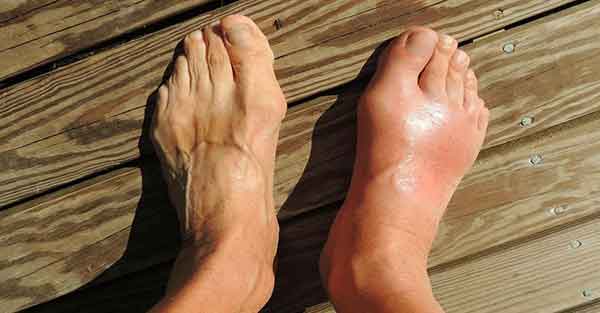At times, swollen feet and ankles can be a temporary problem that comes with a long day at work or running errands. If that’s your case, then don’t be concerned. However, if you experience this pain almost every day, no one would blame you for worrying excessively.
Consistent foot and ankle pain is a sure sign of an underlying serious condition. Should this go on for a while, you risk losing your mobility or being admitted for extreme medical procedures. We know you are anxious to learn how to reduce foot swelling. But first, let’s go through some of its causes so you can strive to avoid them.
Causes of feet swelling
Here are the possible culprits of your feet and ankle swelling
- Pregnancy

During the last trimester, many pregnant women experience swollen feet. This is because of the increased body fluids and which puts lots of pressure on the veins. Thankfully, the condition will pass after childbirth.
- Injuries
Your feet can swell as a result of a direct injury like a sprained ankle or broken bones. Such conditions not only stress the ligaments and joints resulting in aggravated pain but increase blood rush to the affected regions as well.
- Nerve condition and infection
The nervous system, if you remember your basic biology, runs throughout the body-including feet. Any injury or infection to those jetting towards the feet will cause irritation, redness, and other painful conditions. And like we said when there is an injury, blood flow to the feet increases which ultimately brings about swelling.
Some of the nerve problems you need to watch out for include diabetic neuropathy and tendonitis. But no need to worry. There are plenty of shoes for neuropathy, tendonitis, and sciatica relief.
- Vascular problems
Valves are responsible for blood transportation. When they become ineffective, water from your blood flows to your feet resulting in swelling. But we know you are probably not a doctor. So here are the conditions that indicate the possibility of vascular problems
a) Liver disease
b) Kidney disease
c) Heart failure
d) Deep-vein thrombosis
e) Venous insufficiency
f) Phlebitis
- Drug side effects

Are your feet swelling yet you don’t have nerve problems, are not hurt, and definitely not pregnant? The issue could be the side effects of the medications you are using. A few that are associated with swollen feet include antidepressants, steroids, hormones (testosterone and estrogen), diabetes drugs, ACE inhibitors, and NSAIDs (nonsteroidal anti-inflammatory drugs).
In a scenario where drugs are the problem, it is advisable to see a doctor for a change of medication, prescription, or treatment method.
And now to the core question…
How do you reduce swelling in the feet?
Here are a few effective ways to do it:
- Hydrate
It’s exactly a silver bullet to your swollen feet but drinking 8-10 glasses of water a day helps the body flush out toxins, salts, and waste minerals. This also prevents the body from holding onto the little fluid that it has thus contributing to swelling.
- Take a 15-20 minutes salt bath
Epsom salt is one of the best ways to flush toxins out of the body. This only reduces swelling and inflammation but not muscle pain. It’s worth a shot if you want temporary relief. Make sure the salt is labeled USP. This is an FDA approval seal that indicates it is safe for consumption.
- Keep Walking

It doesn’t matter whether you have a plantar fasciitis flare or not. Sometimes sitting or standing in one place for long results in foot arches. The solution can be as simple as taking short walks around the office or home and flexing both your feet and ankles.
- Monitor your salt intake
Like we said before, a huge amount of salt in the body can trigger swelling of the body and feet. So desist from adding salt to meals and consider taking foods with a low amount of salt.
- Cut down your weight
One of the biggest causes of foot swelling and ankle pains is having too much. Since your legs shelve all that weight, they are bound to become overtaxed. Start a weight-loss regimen that fits your schedule in order to minimize the toll your feet take.
- Dive in the pool

Feeling too much pain and nothing seems to help? If you are close to a pool, go and stand in it. The pressure at the bottom compresses the tissues in your feet thus minimizing the pain pangs.
- Use compression socks
Not everyone has a pool or is close to one. If this is the case, then compression socks are the way to go. They work the same way as the pool in that they put some pressure on your feet thus alleviating pain.
- Lift up your feet
Sometimes all you can do to quell pain storms is to lift your legs up. If you can’t hold them in that position, then we suppose you can think of a way to prop them up. This simple technique ensures ample blood flow to the feet.
Using shoes to reduce swelling in the feet
There is a possibility you cannot stay at home because of your swollen feet condition. You must either go to work or run errands. In such a case, you might need shoes for swollen feet.
So how are they different from everyday walking shoes?
Well, for a start, they are spacious to accommodate your feet when they start to bulge. Secondly, they boast of outstanding breathability and comfort similar to (and at times better than) running shoes.
As you may have noticed from the reviews of swollen feet shoes, most of the choices feature Velcro closures. This allows you to create more room when feet expand and tighten it up when they get back to normal.
Remember, if your problem needs medical intervention, do not hesitate to talk to a doctor. Bye and all the best.
Related Resources:

